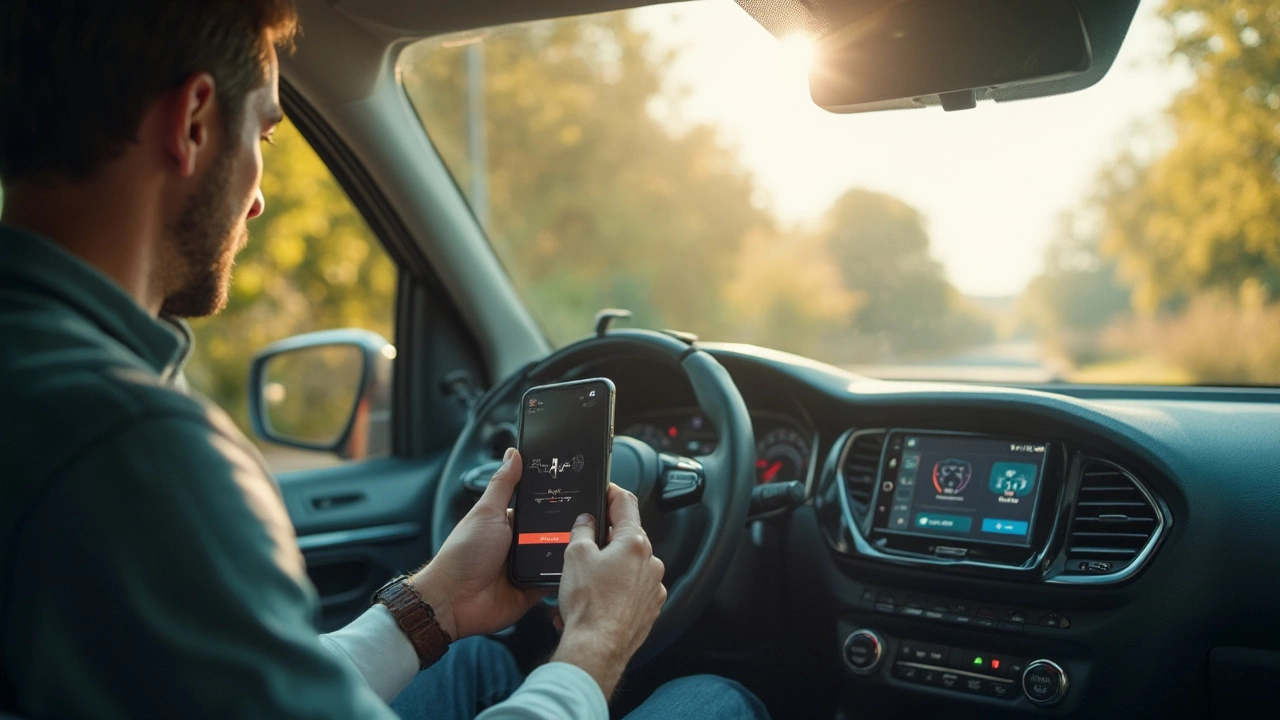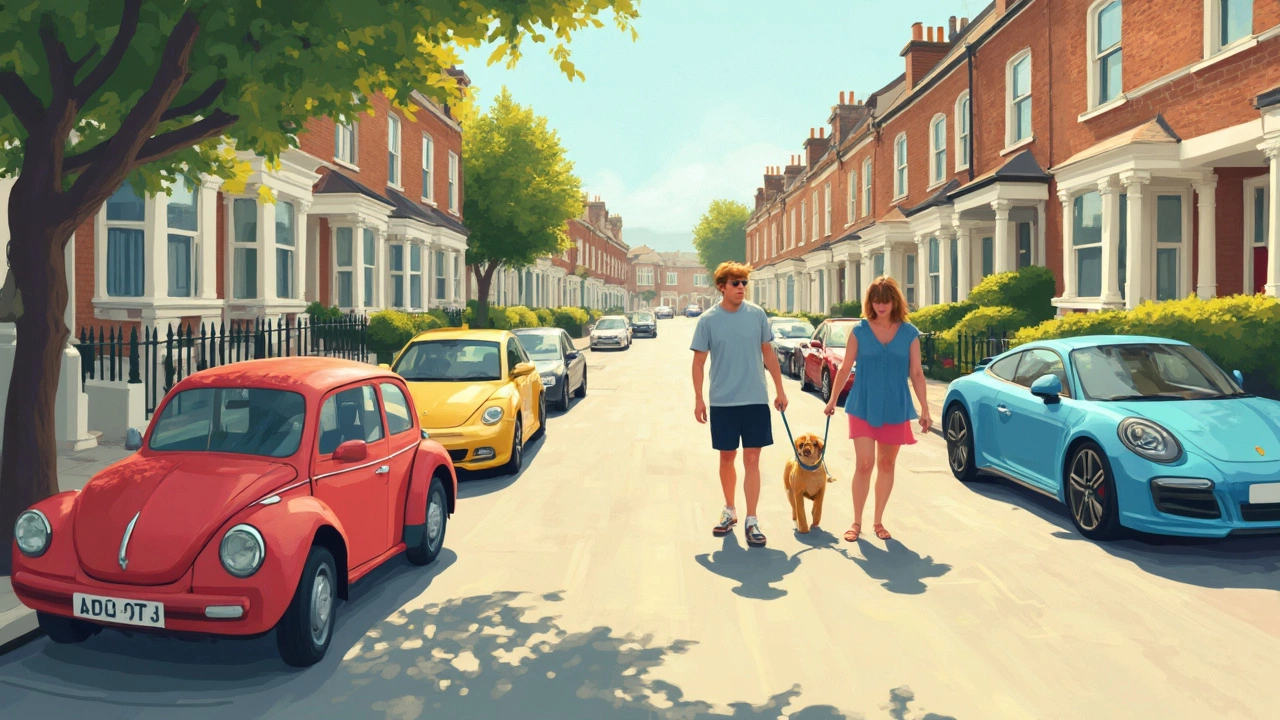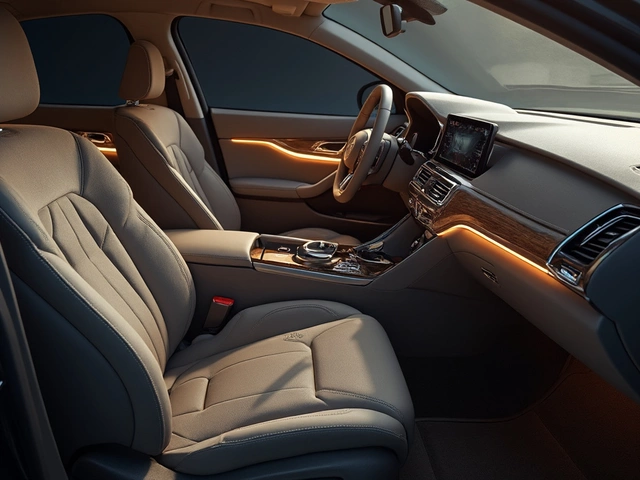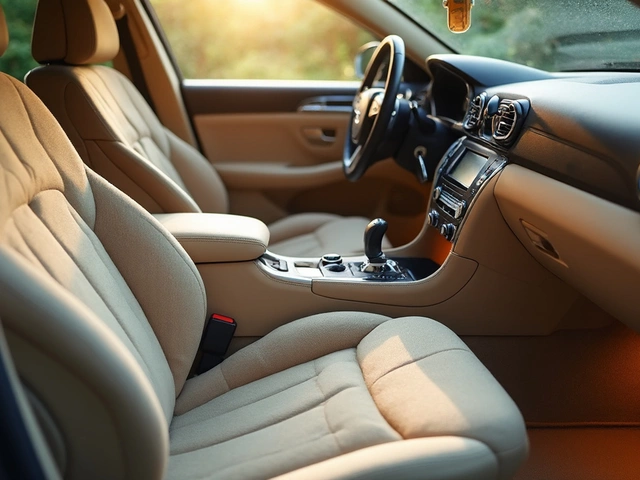There’s nothing quite like opening your car door on a hot day and getting hit by a wall of heat. Ever noticed your steering wheel feels like it’s straight out of a pizza oven? You’re not alone. The inside of a parked car can get 40 degrees hotter than the air outside in less than an hour. That’s brutal—not just for you, but for your seats, dashboard, and anything else left inside.
So what actually works to keep it cooler? The basics still matter: parking in the shade, using a good sunshade, and cracking your windows slightly really does help. But a lot of people skip these because they don’t think it makes a difference. Spoiler: it does, especially if you combine a few of these moves.
- Why Car Interiors Get So Hot
- Easy Shade Solutions That Make a Difference
- How to Ventilate Without the Downside
- Materials and Gadgets Worth Trying
- Long-term Habits for a Cooler Ride
Why Car Interiors Get So Hot
Every summer, you crack open your car door and get blasted by a wave of heat. But what’s actually going on inside? It comes down to the way sunlight, especially ultraviolet (UV) and infrared rays, pours through your windows and gets trapped. Basically, your car turns into a greenhouse the moment you shut the doors. Sunlight beams in, and all that energy doesn't escape easily. That’s why even a brand new ride with a killer paint job can't escape the sizzle.
The dashboard, steering wheel, and seats act like sponges for heat. You get inside, and everything you touch feels hotter than a sidewalk in July. Here’s something wild: a test by the American Academy of Pediatrics showed that within 30 minutes, the temperature inside a parked car can shoot up to 120°F (49°C), even on a day when it’s only 85°F (29°C) outside. The first 10 minutes are the worst, with the steepest climb.
"Within just minutes, cabin temperatures can become dangerously high. It’s not just uncomfortable—it can be unsafe for kids, pets, and anyone left inside." — National Highway Traffic Safety Administration
What kind of surfaces get the hottest? The ones in direct sunlight, like your dashboard and vinyl seats, pull in the most heat. Every material holds heat differently, but the darker and denser it is, the more it’ll cook. Ever notice how a black leather seat turns molten, but a light gray cloth seat isn’t as bad? That’s why color and fabric choices matter when you’re thinking about car interior coolness.
| Surface | Typical Temperature After 30 Minutes (°F) |
|---|---|
| Dashboard (dark color) | 160 – 180 |
| Steering Wheel (leather) | 140 – 170 |
| Seat (cloth, light color) | 110 – 125 |
It’s not just about discomfort, either. Excessive heat can wear out your car’s plastics, electronics, and even ruin your favorite snacks or gadgets. Knowing what makes the temps soar is the first step toward actually keeping things bearable inside.
Easy Shade Solutions That Make a Difference
Keeping your car out of direct sunlight sounds obvious, but it’s the fastest way to dodge that blazing heat. Check this out—parking under a tree or carport can lower inside temps by up to 20°F. Even if the whole car isn’t shaded, covering as much as possible helps. Spot a building’s shadow in a parking lot? That counts too.
Up next: sunshades. Not all are equal. Reflective shades for the windshield bounce a ton of heat right back out. A study from Stanford showed a simple foil windshield shade can drop dashboard temps by up to 40°F compared to no shade at all. Don’t skip the rear and side windows, especially if you’ve got kids or pets. Static cling shades or mesh pull-downs are cheap and seriously cut down direct sunlight.
Here’s a handy breakdown of car shade options and how much they help:
| Shade Solution | Typical Temperature Drop | Cost Range |
|---|---|---|
| Parking in Shade | 15-20°F | Free |
| Windshield Sunshade (Reflective) | 30-40°F (dashboard) | $10-$30 |
| Rear/Side Window Shades | 10-15°F (localized) | $5-$20 each |
| Tinted Windows (legal limits apply) | 10-20°F | $100-$300 |
Tinted windows help too, not just for privacy but for keeping things cool. They block a chunk of the sun’s UV and infrared rays. But double-check local laws before you get that limo tint.
To actually make these work, layer up: combine a car interior sunshade with window tints and park where you find real shade, even if it means walking a bit farther. That combos gives you the best shot at not roasting inside your own car.

How to Ventilate Without the Downside
Cracking your windows is a classic move, but you always wonder—am I just letting in thieves or rain? Ventilating your car works way better than most people think, and there are ways to do it without inviting problems. Studies show that just leaving your windows open an inch or two lets heat escape fast, dropping your car’s cabin temperature by as much as 10-15°F compared to fully closed windows.
If theft is a worry, get window visors (those tinted shields that stick above your windows). They let you keep the glass cracked, rain out, and prying eyes away. Super popular in places with constant sun, like Florida and California, and they’re usually under $50 for a set.
Sunroofs and moonroofs can help too. If you have one, pop it open slightly. Hot air rises, so even a tiny gap up top helps more than you’d think. Just don’t open it all the way, or a surprise downpour will ruin your day.
The trick is finding the sweet spot between airflow and security. Here’s a quick breakdown of what each common method brings to the table:
| Ventilation Method | Cooling Effect | Risks |
|---|---|---|
| Windows cracked 1 inch | 10-15°F cooler | Minimal rain; moderate theft risk |
| Window visors + windows cracked | 12-18°F cooler | Very low rain; lower theft risk |
| Sunroof cracked | Up to 10°F cooler | Rain entry; slight theft risk |
| Leaving A/C on (remote start) | 20°F+ cooler | Drains battery, uses gas/electricity |
If you’re parked for just a few hours and it’s safe, that tiny window gap can make a world of difference. For a boost, pick up a small battery-powered window fan. Some even recharge via solar, and they help suck out hot air, moving things along faster.
- Keep windows cracked less than two inches for safety and enough ventilation.
- Add window visors if theft or rain are concerns.
- Pop the sunroof, but never forget to close it if clouds start rolling in.
- Try a portable solar fan for extra oomph—no wiring needed.
Mix and match these ideas and you’ll notice the difference. Just remember, the goal is cooler air, not an open invitation to Mother Nature—or your neighborhood car thief. Make sure your car interior stays chill, without any extra headaches.
Materials and Gadgets Worth Trying
If you want something beyond the usual sunshade, there’s a bunch of gear and materials made just for beating the heat inside your car. Some solutions cost next to nothing, while others are serious upgrades. Here’s what’s actually worth your money and time.
- Car interior window tints: Tinted windows aren’t just about looks. Factory-approved tint blocks up to 99% of UV rays and keeps a ton of heat out, sometimes dropping the cabin temperature by 10-15°F. It also protects your dashboard and seats from fading or cracking.
- Windshield sunshades: Not all sunshades are equal. Reflective accordion-style shades can reflect up to 60% of the sun's heat. Choose one that fits your windshield so you don’t have gaps.
- Portable fans: Battery-powered or solar fans aren’t magic, but they boost airflow when parked. Some slip onto your windows, circulating hot air out. Pair them with a cracked window for best results.
- Steering wheel and seat covers: Ever burn your thighs or hands on a hot seat or wheel? Cover them up. Light-colored, breathable fabrics cut heat absorption. Memory foam covers keep seats cooler and feel way better in shorts.
- Insulated organizers: If you keep snacks, electronics, or even painkillers in your car, put them in a small, insulated cooler bag. It gives you a couple extra hours before things overheat.
- Evaporative coolers: You’ll see these more in trucks or RVs, but portable mini evaporative coolers (sometimes called “swamp coolers”) can chill the air a bit with water and a fan. Not an AC replacement, but better than nothing in a dry climate.
Whatever you try, aim for stuff that’s easy to set up and doesn’t distract you while driving. Most people who stick with these gadgets use the combination that suits their daily routine—like shade plus a cover, or tint plus a fan. Try one or two and see which makes the most difference for your ride.

Long-term Habits for a Cooler Ride
Cooling your car isn’t just about tossing up a sunshade every once in a while. It pays off big time to make a habit of a few things every day. Want less sweat and more comfort? Let’s talk changes you can actually stick with.
First, always look for covered parking, even if it means walking a few extra steps. Shade from a tree helps but a covered garage is way better. Some studies from the Department of Energy show that cars parked in direct sun can heat up inside by more than 20°F in just 10 minutes, while cars in shade rise much more slowly.
Keep your windows slightly cracked whenever possible. That tiny gap lets hot air escape instead of getting trapped. Of course, don’t do this in unsafe areas or when it might rain. Here’s a good rule of thumb: if you wouldn’t leave your windows open at home, don’t do it with your car.
Seat covers aren’t just for style—they’re practical, too. Light-colored, breathable covers can help keep those seats from soaking up and holding on to heat. The same goes for steering wheel covers. There’s nothing worse than burning your hands before you’ve even started driving.
"Every degree you can lower the interior temp slows down the damage to your dashboard, electronics, and upholstery." — Consumer Reports Auto Test Center
Make it a habit to remove electronics and delicate stuff like sunglasses, snacks, or batteries from your car when leaving it parked. Heat can ruin those fast, and not just on a super sunny day.
- Choose window tint that's legal in your state—it can block up to 99% of UV rays.
- Get into the habit of using reflective sunshades on both front and back windshield when parked for long stretches.
- Park with your back window facing the sun if you can't find shade—this helps protect your dashboard and steering wheel from direct rays.
- Regularly clean your car interior; dust and grime can actually trap heat.
If you want a quick snapshot of what helps most, check this out:
| Habit | Estimated Temp Drop |
|---|---|
| Use high-quality sunshade | Down by 15°F to 20°F |
| Park in covered area | Down by 30°F or more |
| Window tint | Down by 10°F to 15°F |
| Light seat and steering covers | Down by 5°F |
Making these things second nature isn’t hard, and your car interior will thank you every summer. Less heat means less wear, so your ride stays nice for longer and you don’t dread sliding behind the wheel. Simple, steady habits pay off.




